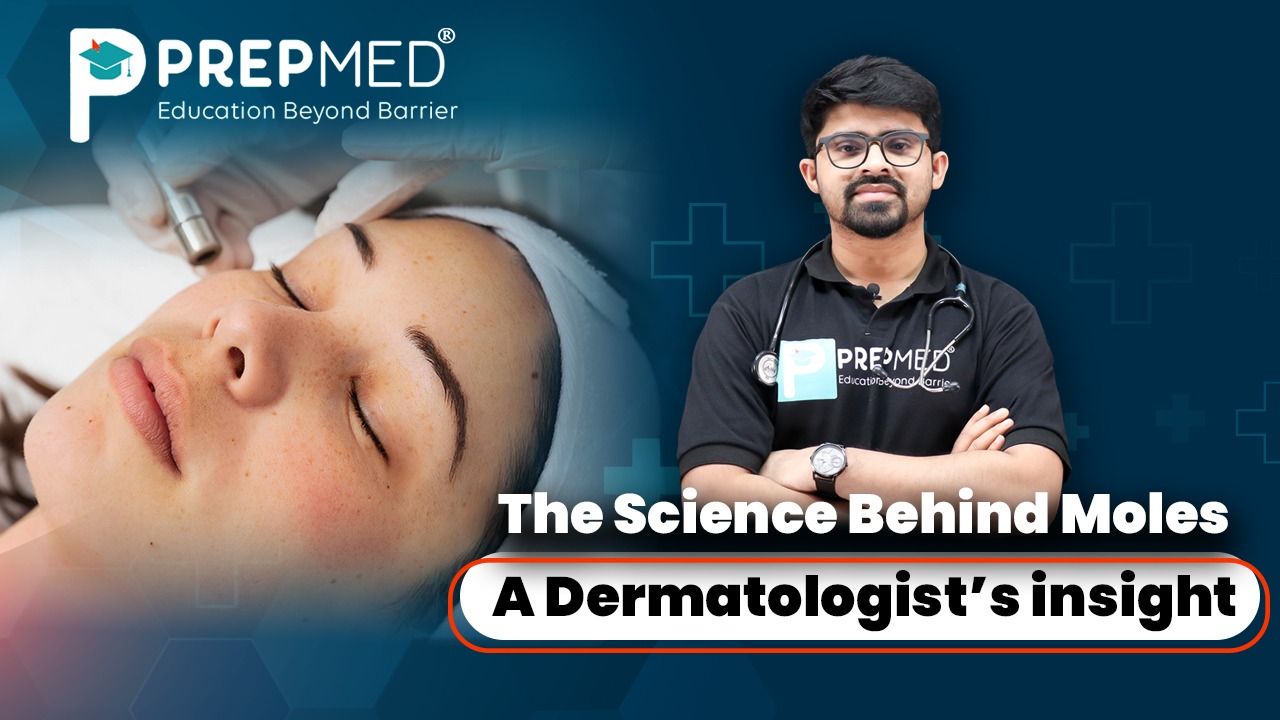November 15, 2024
The Science Behind Moles: A Dermatologist’s Insight
Moles are generally single or clusters of pigmented cells that develop on the skin. According to Dermatologist’s insight, moles form from melanocytes when they develop in clusters rather than spreading uniformly. There are various types of moles that develop during the adult phase of human beings due to the increased sun exposure and high production of melanin. Some moles are caused due to heredity as a certain number and location of moles are highly determined by various genetic factors.
The science behind moles explains the importance of regular skin evaluation, the importance of using sun’s protection, and various ways to maintain good skin health and prevent skin diseases.
What are moles?
Moles are also called nevus. Majority of the moles are harmless and non-contagious. They don’t cause any itchiness or pain. Skin moles can range from your natural skin color to dark brown or black depending on the pigments. Moles generally stay for nearly 40-50 years and slowly they change their color into a tone lighter than their fresh one. Some moles do not change in their structure at all, whereas some disappear completely over time.
Let’s know about the various types of moles:
There are various types of moles that can appear on your skin. Have a look.
- Common Nevi: These are the most common and prevailing moles that appears during childhood or adolescence. They have a round or oval structure with even pigmentation and have a prominent edge.
- Congenital Nevi: These moles appear on the skin during birth and can transform into melanoma unlike the acquired(common) moles. However, if your skin moles are larger than 7-9 mm in diameters, then they can grow into cancerous moles.
- Dysplastic(Atypical) Nevi: These moles have a larger surface area than the acquired moles and have no regular shape. These moles have uneven color distribution, the centers are dark brown whereas the edges are not even and are lighter in color. These moles are genetically acquired and people with dysplastic moles have a higher chance of developing malignant melanoma.
- Spitz Nevi: These moles are non-cancerous and appear during childhood and has a round pink bump like structure.
- Blue Nevi: These moles are generally blue-black or only blue in color and are non-cancerous. Blue nevi has a higher chance of occurring on females rather than on males.
- Halo Nevi: These moles are characterized with a white ring-like structure around them. These are generally benign but can be related to vitiligo.
- Junctional Moles: These moles have a flat surface and are located between the epidermis and the dermis layer of the skin. They are most likely pigmented and occur during the childhood stage.
- Intradermal Moles: These moles occur due to the deeply located pigment cells within the dermis layer of the skin. These are non-cancerous.
- Compound Moles: A combination of the junctional and intradermal moles. These moles have a characteristic flesh or brown color.
The ABCDE Rules of Moles:
The American Academy of Dermatology Association mentions to check out for the ABCDE rule to remember the features and symptoms of a concerning and a malignant mole:
- Asymmetry: Check out if your mole has changed its symmetry and is not uniform throughout. One half of the mole is not similar to the other half. Cancerous moles are not symmetrical.
- Border: The Mole has irregular and blurred edges, benign moles have uniform and even borders.
- Color: The color of the moles ranges between blue, black, pink, white, or brown. Malignant moles have non-uniform shades of color whereas normal moles usually have a single brown color.
- Diameter: If you see that your moles are larger than 5 millimeters, it is showing you a concern sign. Normal moles are tiny and small bumps like structure.
- Evolving: If you find out that your mole has changed its color, size, shape, or structure, consider going to a dermatologist as the moles might start to bleed, itch, or become uneven.
Wear SPF:
Taking care of your skin with SPF 30 or higher than that is necessary to prevent skin cancer. Full sun protection is equally important to everyone regardless of their skin color or texture. Wearing sunscreen not only protects your skin, but also moles from exposed sun’s rays and damage.
When to see a Dermatologist:
Dermatologists recommend that every adult from their early twenties should get an annual skin and health checkup to check for any underlying disease. This helps the skin specialists to check for any changes in their moles or any new malignant cell growth. However, if you notice any change in your skin, it is recommended that you book an appointment immediately with your skin doctor!
Moles that arises question:
1. Any new uneven mole on your skin
2. A mole that has changed its color and shape
3. Moles that are swollen with red bumps and itchiness
4. Any bleeding mole without any injury
FAQS:
1. Can I remove my own moles?
It is not safe to practice self-removal of any kind of moles as it can cause different types of skin infection, thereby leaving behind permanent scars. Always seek medical professionals help for mole removals.
2. How can I differentiate between normal and cancerous moles?
Normal moles are small in size, with even borders, and have a single color, whereas cancerous moles are larger like a pencil eraser, have blurry borders, and are discolored.
3. How can I treat my moles at home?
Normal skin moles require no treatment as such. Wearing sunscreen daily and sun exposure and limiting sun exposure are the major ways of preventing skin cancer. Visiting your dermatologist and diagnosing your skin condition twice a year is recommended to look out for any kind of irregularities in your skin texture or color






